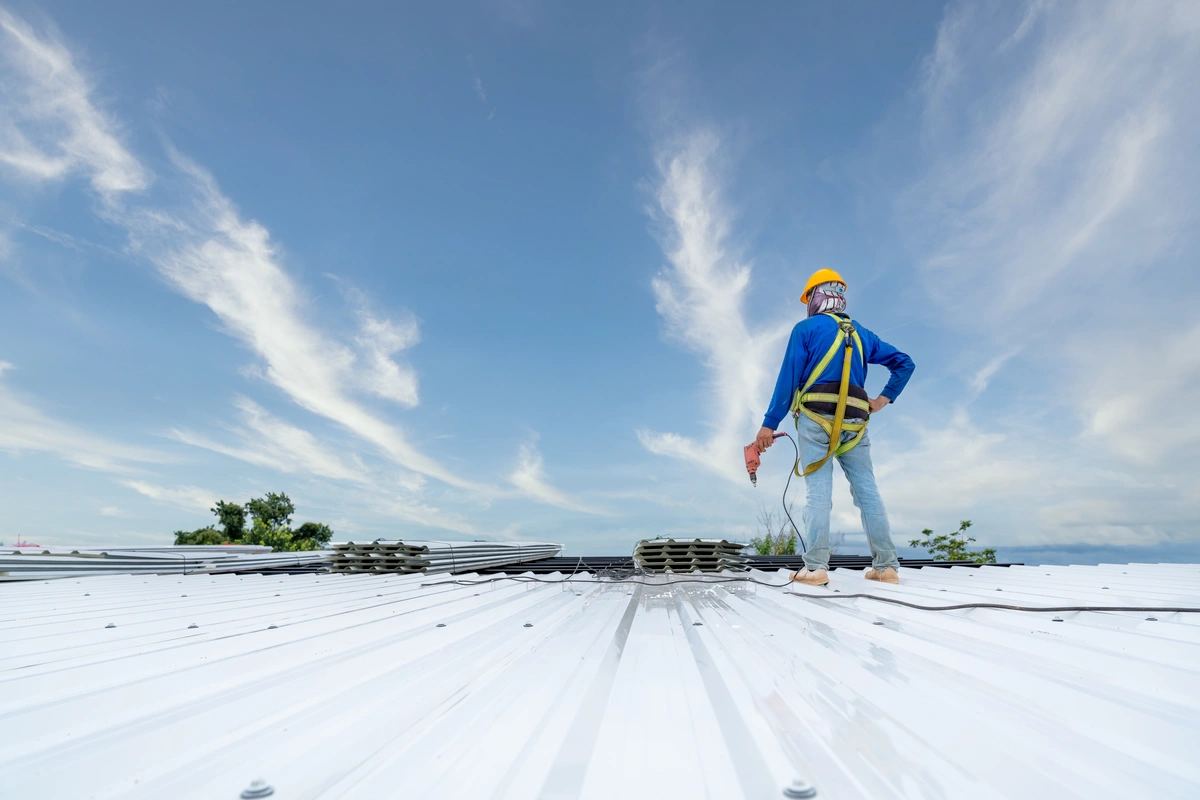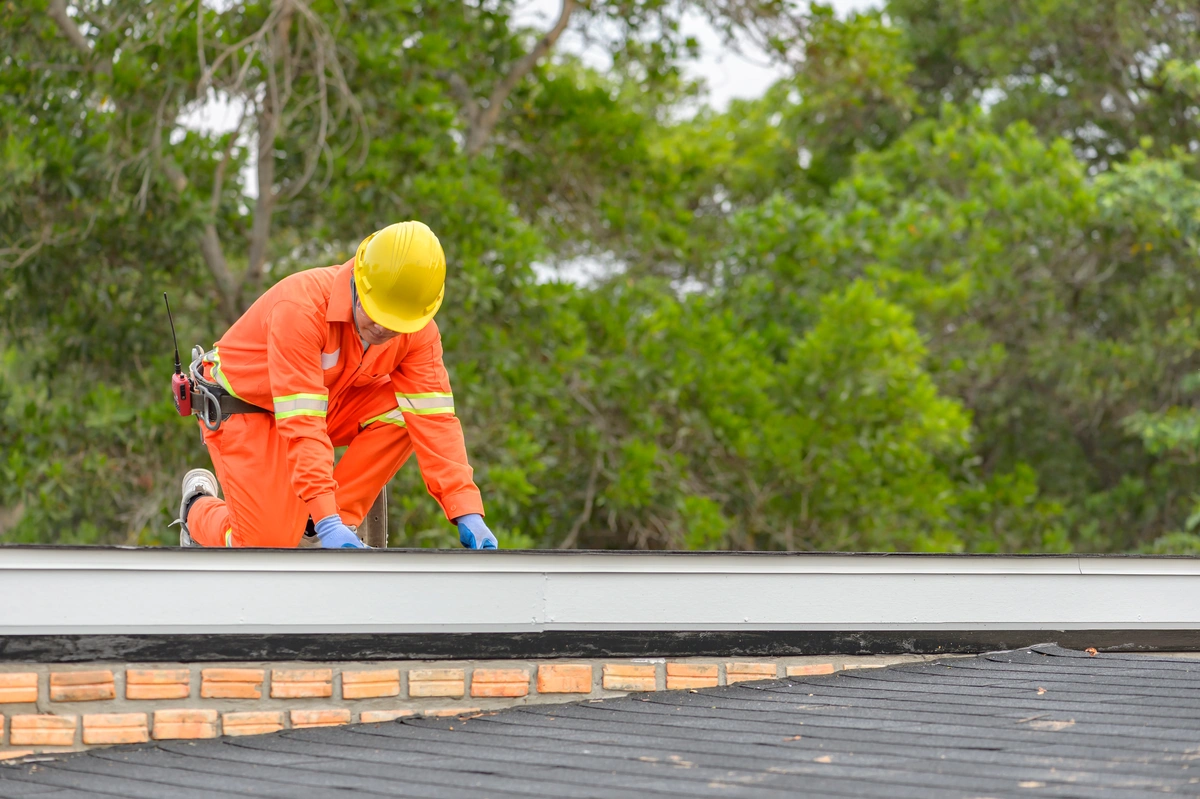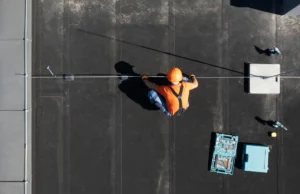When it comes to maintaining a commercial building, one of the most critical aspects is ensuring the integrity of its roof. A well-maintained roof not only protects your assets and employees but also maintains the overall structural integrity of the building.
Over time, however, even the sturdiest commercial roofs can start to show signs of wear and tear. When that happens, it’s essential to understand the commercial roof replacement process to ensure the longevity and safety of your property.
In today’s blog we’ll help you understand everything you need to know about a commercial roof replacement, including:
- When to replace your roof
- The steps involved in the process
- The cost for a commercial roof replacement
Signs That You Need to Replace Your Commercial Roof
Before delving into the commercial roof replacement process, it’s essential to identify the telltale signs that indicate your roof may be due for replacement:
- Age of the Roof: Commercial roofs have a lifespan that varies depending on the material used. Asphalt shingles may last around 20-30 years, while metal roofs can endure for 40-70 years. If your roof is nearing the end of its expected lifespan, it’s time to consider replacement.
- Leaks and Water Damage: Persistent leaks or water damage are clear signs of roof deterioration. If you notice water stains on your ceiling, walls, or insulation, it’s crucial to address the issue promptly to prevent further damage to your building’s interior.
- Visible Roofing Issues: Inspect your roof regularly for visible problems such as cracked or missing shingles, rust on metal surfaces, or blistering and peeling on flat roofs. These issues can indicate that your roof is no longer providing adequate protection.
- High Energy Bills: An aging or damaged roof can lead to poor insulation, causing your heating and cooling systems to work harder. If you’ve noticed a significant increase in your energy bills, it may be due to an inefficient roof.
- Sagging or Warping: A sagging or warped roof structure is a severe issue that requires immediate attention. It suggests that your roof’s structural integrity is compromised and poses a safety risk.
The 8 Steps in a Commercial Roof Replacement
Replacing a commercial roof is a complex process that involves several steps. Here’s an overview of the typical commercial roof replacement process:
1. Roof Inspection and Assessment
The first step is to hire a professional roofing contractor to inspect your roof thoroughly. They will assess the extent of the damage, determine the appropriate replacement materials, and provide you with an estimate for the project.
2. Permitting and Planning
Once you decide to proceed with the replacement, you’ll need to obtain any necessary permits from local authorities. The roofing contractor will also develop a detailed plan for the replacement, including a timeline and budget.
3. Tear-Off
Before installing a new roof, the old one must be removed. This process involves tearing off the existing roofing materials down to the structural deck. It’s a labor-intensive and messy phase of the project.
4. Repair and Preparation
After the tear-off, any underlying structural issues are addressed and repaired. This includes fixing damaged decking or insulation. The roof is then prepared for the installation of the new materials.
5. Roof Installation
The choice of roofing material plays a significant role in this step. Common commercial roofing materials include:
a. Single-Ply Membrane (TPO, PVC, EPDM)
- Lightweight and cost-effective
- Provides good UV resistance
- Suitable for flat or low-sloped roofs
b. Metal Roofing
- Durable and long-lasting
- Resistant to fire, wind, and pests
- Ideal for sloped or flat roofs
c. Built-Up Roofing (BUR)
- Multiple layers of roofing felt and asphalt or bitumen
- Excellent waterproofing properties
- Suitable for flat roofs
d. Modified Bitumen
- Asphalt-based roofing with added modifiers for enhanced performance
- Resistant to extreme temperatures
- Commonly used on flat or low-sloped roofs
The installation process varies depending on the selected material. It involves applying the new roofing material, including insulation and protective layers, to create a watertight seal.
6. Quality Inspection
Once the new roof is installed, it undergoes a thorough quality inspection to ensure it meets industry standards and manufacturer specifications.
7. Cleanup and Final Inspection
After passing the quality inspection, the roofing contractor cleans up the work site, removing any debris and ensuring the area is safe. A final inspection is conducted to verify the roof’s integrity.
8. Warranty and Maintenance
Most roofing materials come with warranties that cover a specific period. It’s essential to understand the terms of the warranty and perform regular maintenance to maximize the roof’s lifespan.
How Long Does a Commercial Roof Replacement Take?
The duration of a commercial roof replacement can vary depending on several factors, including the size and complexity of the project, weather conditions, and the chosen roofing material. On average, a commercial roof replacement can take anywhere from a few days to several weeks.
Simple projects with minimal repairs and favorable weather conditions may be completed in a shorter timeframe. However, larger buildings with extensive damage or complex roof structures may require more time for a thorough replacement.
It’s crucial to consult with your roofing contractor to get a specific timeline for your project. They can provide a more accurate estimate based on the unique characteristics of your commercial building and the chosen roofing materials.
The Cost to Replace Your Commercial Roof, by Material
The cost of replacing a commercial roof can vary significantly depending on the type of roofing material you choose. Here’s a breakdown of the estimated costs for different commercial roofing materials:
- Single-Ply Membrane (TPO, PVC, EPDM): $3 to $7 per square foot
- Metal Roofing: $7 to $12 per square foot
- Built-Up Roofing (BUR): $4 to $8 per square foot
- Modified Bitumen: $4 to $8 per square foot
It’s important to note that these cost estimates are approximate and can vary based on factors such as location, labor costs, and any additional features or insulation requirements. To get an accurate quote for your commercial roof replacement, it’s advisable to consult with experienced roofing contractors who can provide a detailed assessment of your specific project.
Learn More About Your Commercial Roof Replacement Cost
The commercial roof replacement process is a vital aspect of maintaining the integrity and longevity of your commercial building. Recognizing the signs that indicate the need for replacement, understanding the steps involved, and considering the cost based on your choice of roofing material will help you make informed decisions and ensure the protection of your valuable assets. When it comes to commercial roofing, investing in quality replacement is an investment in the future of your business.
Contact Trojan Roofing today to get a free estimate for your commercial flat roof!



